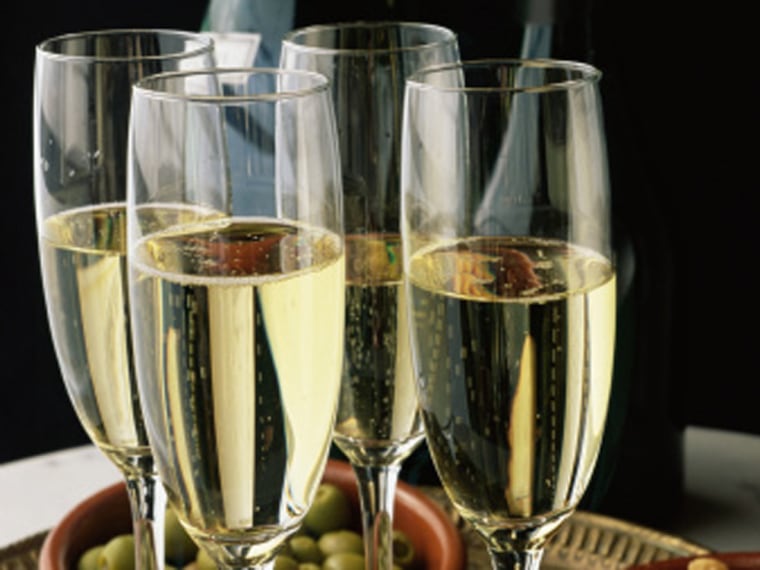New Year’s Eve is finally here and with trendy clubs and bars overcharging for a single glass of sparkling wine and frozen and flavorless hors d’oeuvres to ring in the New Year, there’s no shame in partying at home. Pop the cork on your favorite bubbly and make your own tasty bites.
While Champagne, France is best known for its production of the world’s most famous fermented libation, Italy and Spain offer delicious (and less expensive) alternatives with their respective prosecco and cava.
But what’s the difference between these three sparkling wines?
The major difference is in the process of fermentation (the “bubble making process”). Champagne goes through a second fermentation in a sealed bottle. For prosecco and cava, the second fermentation is done in a large vat, also known as the Charmat method. The three wines are also made from different grape varietals: Champagne from chardonnay, pinot noir and pinot meunier grapes; cava from macabeo, parellada and xarel-lo grapes and prosecco from glera grapes.
Each wine has different amounts of fizz, either frizzante or spumante. The easiest way to determine how much fizz your bubbly will have is to simply compare the corks. If the cork has a string attached to it, you’ll have light fizz (frizzante) and if you notice a wire – traditional for Champagne – then you’ll have heavy fizz (spumante).
And in general as far as taste, Champagne is rich and complex, while cava and prosecco are lighter and slightly fruitier.
Now that the science is out of the way, this New Year’s enjoy a pairing of a Champagne, prosecco and cava with a simple dish that is sure to add sizzle to your sparkle.
It is said that “Champagne goes with everything.” Perhaps that is because notes of citrus, apple and pear balanced with crisp acidity and a soft and creamy mouth feel are a perfect pairing for cheeses, delicate fish and foul alike. One of our favorite festive pairings with Champagne is East Coast Beausoleil oysters. These petite, black-and-white-shelled bivalves from New Brunswick are briny, delicate and salty, complementing the rich flavor of white currant in Billecart-Salmon Brut Reserve ($50). Comprised of all three Champagne grapes, this bottle is worth the price as it is from one of France’s oldest Champagne-making houses.
Italy does so many things right when it comes to food and drink, and their prosecco and cured meats are no exception. While figgy pudding may no longer be on holiday menus, fresh figs and prosciutto make an easy and delicious appetizer to execute and serve at New Year’s Eve parties. Choose the subtly sweet Prosciutto di San Daniele that hails from Italy’s northern region of Friuli-Venezia-Giulia, and pair it with Nino Franco Prosecco di Valdobbiadene Rustico ($15). This classic, off-dry sparkler has notes of tropical fruit and a bone-dry finish.
Recipe: Make a Spanish cava cocktail
Spanish Cava is growing steadily in popularity. Llopart "Leopardi" Cava Brut Rosè Reserva 2008 ($15) from the Catalonia region is made from the grapes of Mouvedre and Garnacha. This cava is a great match with a cheese course. This pink sparkling wine offers a wonderful bouquet of cranberry and wild red fruits underscored with lovely minerality. Choose a trio of cheeses from each of these countries – garrotxa (a semi-firm goat milk cheese from Spain), a hearty hunk of aged parmesan (hard cow milk cheese from Italy) with a drizzle of ten-year balsamic vinegar and a creamy brie (cow milk cheese from France).
More from TODAY Food:
